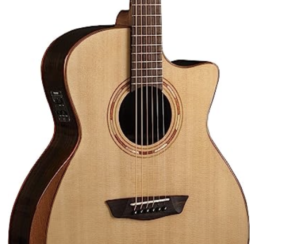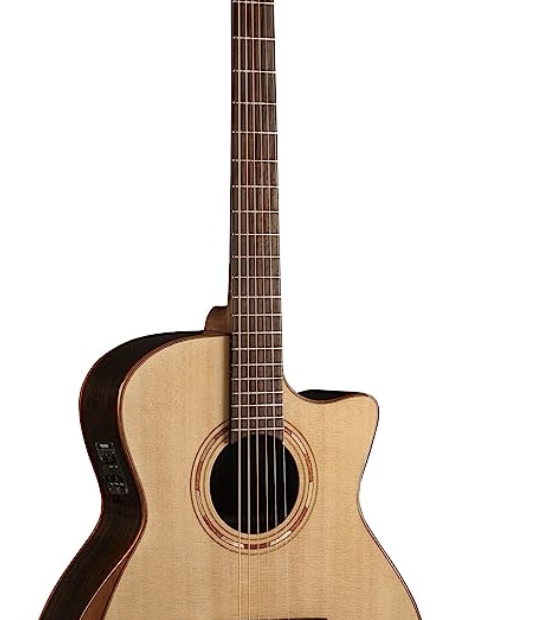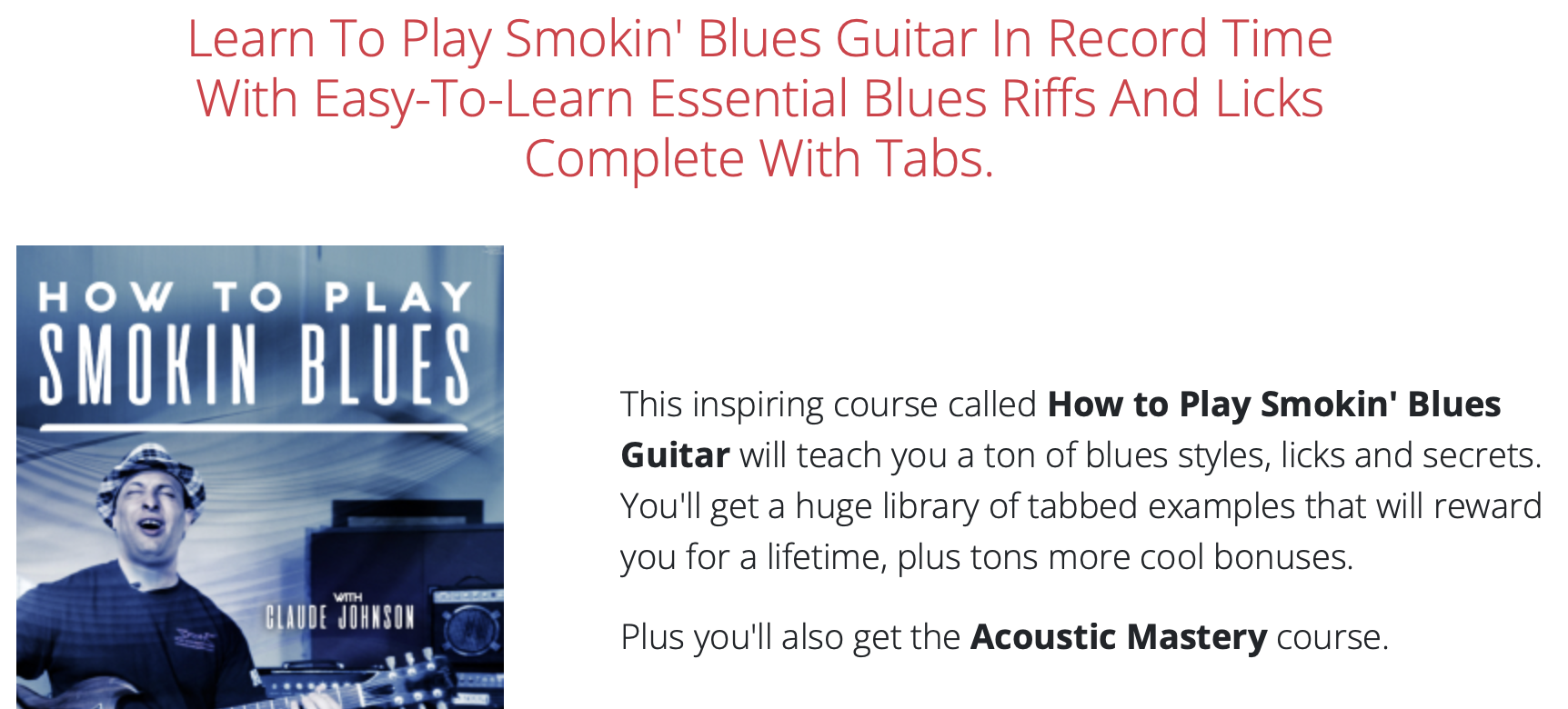One of the greatest advantages of playing guitar is the large amount of material available to play. It is easy to find all kinds of music that you can play on the guitar: rock, pop, ballads, jazz, you choose it. In this article you’ll understand how to learn guitar faster.
With all this kind of material written for the instrument, it is sometimes difficult to decide how to begin the exploration of all this amount of music.
How can someone decide what is the best way to lean to play the guitar? Should one start with simple folk songs, or it is better to use more modern music?
These are the kinds of questions that beginners consider when thinking about music on guitar. However, there are simple ways to achieve your goals, if you spend enough time practicing. Here are a few tips that you can follow.
Also Read:
10 Must-Have Guitar Accessories to Elevate Your Playing
Top Tips to Play Guitar Chords
1. Using Lyrics and Chords to Learn Songs
 One of the secrets to learn guitar fast is to start using guitar lyrics and chords in a combination. A lot of written material for guitar includes the lyrics for popular songs. Sometimes this doesn’t happen for copyright reasons (since independent publishers may not have permission to include lyrics), but many songbooks will display the lyrics too.
One of the secrets to learn guitar fast is to start using guitar lyrics and chords in a combination. A lot of written material for guitar includes the lyrics for popular songs. Sometimes this doesn’t happen for copyright reasons (since independent publishers may not have permission to include lyrics), but many songbooks will display the lyrics too.
Having the lyrics and chords in the same page is a powerful method of learning. The best thing about combining both chords and lyrics is that you can have a better idea of when the chords change. For a beginner, this is a very important indication. Also, you can improve your sense of music orientation, by looking at exactly where in the song certain chords will change.
Using lyrics and chords is a common and effective method for learning songs on the guitar. Here’s a step-by-step guide on how to use lyrics and chords to learn songs:
- Find the Lyrics and Chords: Look for the lyrics and chords of the song you want to learn. You can find them in songbooks, online chord websites, or by searching for “[song title] chords” or “[song title] lyrics and chords” in a search engine. Many websites provide accurate chord charts with lyrics.
- Familiarize Yourself with the Chord Shapes: Take a look at the chord diagrams or chord symbols provided in the chord chart. If you’re unfamiliar with any of the chords, learn the finger positions and practice transitioning between them. It’s essential to be comfortable with the basic chord shapes used in the song.
- Follow the Chord Progression: Look at the chord names above the lyrics and play the corresponding chords at the right time. Start by strumming each chord once per measure and focus on transitioning smoothly between the chords. Listen to the song as you play along to get a sense of the rhythm and timing.
- Sing Along with the Lyrics: Once you can smoothly play the chord changes, start singing along with the lyrics. Pay attention to the melody and try to match your singing with the original recording or your preferred interpretation. This will help you develop your sense of timing and phrasing.
- Practice Strumming Patterns: Experiment with different strumming patterns to match the song’s rhythm and style. You can start with a simple downstroke strumming pattern and gradually add more complexity as you become comfortable with the chord progression.
- Focus on Challenging Parts: If there are specific sections of the song that you find difficult, isolate those parts and practice them separately. Slow down the tempo, break down the chord changes, and gradually increase the speed as you improve. Use the original recording as a reference to ensure accuracy.
Remember that you can make a lot of progress by using smart techniques. Combining chords and lyrics is one of the ways that you can improve your practice.
2. Use Rhythm as an Indication
 Another powerful indication that you can use to learn songs fast is the rhythm of the song. Sometimes, when people start to learn a new song, they’re so concerned about the chords and notes that they forget to use one of the most important parts of any song: the rhythm.
Another powerful indication that you can use to learn songs fast is the rhythm of the song. Sometimes, when people start to learn a new song, they’re so concerned about the chords and notes that they forget to use one of the most important parts of any song: the rhythm.
Using the rhythm can help you make better sense of changes, moments when you need to use a different chord, or simply make your song more lively.
Many songs will have a clear rhythm that can be used directly. Other songs may work with different rhythms, and you can choose the one that works best for you. In any case, you need to determine the exact rhythm to follow in your interpretation, and use it.
Here are some additional tips on how to use rhythm to learn guitar:
- Focus on Timing: Develop a strong sense of timing by practicing with a metronome or drum tracks. Start by playing simple rhythms along with the metronome, ensuring that your strums or picking align with the beat. Gradually increase the tempo as you become more comfortable.
- Learn Basic Rhythm Patterns: Master foundational rhythm patterns such as quarter notes, eighth notes, and their variations. Practice playing these patterns using downstrokes, upstrokes, or a combination of both. Work on maintaining consistent timing and clarity in your playing.
- Strumming Techniques: Experiment with various strumming techniques to add texture and dynamics to your playing. Learn techniques like palm muting, accents, ghost notes, and percussive strums to enhance your rhythm playing. Practice these techniques with different strumming patterns and chord progressions.
- Study Different Musical Styles: Explore various musical genres that rely heavily on rhythm, such as blues, funk, reggae, and Latin music. Listen to recordings of artists known for their strong rhythm playing in these genres and try to emulate their feel and groove. Pay attention to how they accent certain beats and create syncopated rhythms.
- Play Along with Backing Tracks: Utilize backing tracks or drum loops to play along with different rhythmic patterns and musical styles. This helps you develop a sense of how your playing fits into a larger musical context. It also enhances your ability to lock in with the rhythm section and reinforces your timing and groove.
3. Simplify Chords if Needed
 Another tip to learn songs faster is to simplify and substitute chords when needed. If you’re unsure about a particular chord in a song, you can always make a substitution for a simpler chord.
Another tip to learn songs faster is to simplify and substitute chords when needed. If you’re unsure about a particular chord in a song, you can always make a substitution for a simpler chord.
For example, if the song has an Am7 chord, you can play Am instead, so you don’t need to worry about a particular chord shape that you’re not familiar with. As you improve, you will be able to use more and more complex chords if needed, but then you’ll have already learned the song without major effort.
Pro tip: you can learn thousands of songs using a simple video-based course that is used by lots of guitar players, including my students. The Advancing Guitarist will guide you to learn songs from sheet music as well as by ear.

